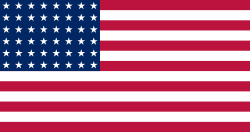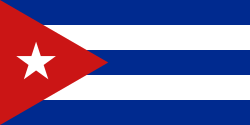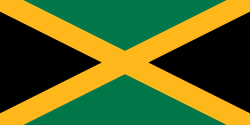Hayes Jones
Hayes Wendell Jones (* 4. August 1938 in Starkville, Oktibbeha County, Mississippi) ist ein ehemaliger US-amerikanischer Leichtathlet. Bei einer Körpergröße von 1,80 m betrug sein Wettkampfgewicht 76 kg.
Hayes Jones war trotz seiner eher geringen Körpergröße aufgrund seiner hohen Grundschnelligkeit und seiner exzellenten Technik jahrelang in der Weltspitze im 110-Meter-Hürdenlauf vertreten. Als Sieger der US-Trials war er Favorit bei den Olympischen Spielen 1960, konnte aber hinter Titelverteidiger Lee Calhoun und Willie May nur die Bronzemedaille gewinnen. Dieses Rennen von 1960 war bislang das letzte 110-Meter-Hürdenfinale der olympischen Geschichte, in dem alle drei Medaillen in die USA gingen. In den Folgejahren gewann Jones in den USA weitere Titel und so konnte er sich auch für die Olympischen Spiele 1964 qualifizieren. Und nun konnte er in 13,6 s die Goldmedaille gewinnen, die er 1960 verpasst hatte.
Hayes Jones konnte in seiner Karriere keinen Weltrekord im Hürdenlauf aufstellen. Gleichwohl ist auch er in der Liste der Weltrekordler vertreten. Er war Mitglied der US-amerikanischen 4-mal-100-Meter-Staffel, die am 15. Juni 1961 in Moskau den Weltrekord von 39,5 s auf 39,1 s verbessern konnte.
Nach dem Ende seiner Karriere als Sportler schlug Jones eine Laufbahn im öffentlichen Dienst ein. Er wurde leitender Beamter in der Verwaltung des Oakland County und gehörte im Jahr 2006 für kurze Zeit als Abgeordneter der Demokraten dem Repräsentantenhaus von Michigan an.[1]
Einzelnachweise
Weblinks
- Hayes Jones in der Datenbank von Olympedia.org (englisch)
| Personendaten | |
|---|---|
| NAME | Jones, Hayes |
| ALTERNATIVNAMEN | Jones, Hayes Wendell (vollständiger Name) |
| KURZBESCHREIBUNG | US-amerikanischer Leichtathlet |
| GEBURTSDATUM | 4. August 1938 |
| GEBURTSORT | Starkville, Mississippi |
Auf dieser Seite verwendete Medien
Olympic Rings without "rims" (gaps between the rings), As used, eg. in the logos of the 2008 and 2016 Olympics. The colour scheme applied here was specified in 2023 guidelines.
Olympic Rings without "rims" (gaps between the rings), As used, eg. in the logos of the 2008 and 2016 Olympics. The colour scheme applied here was specified in 2023 guidelines.
US Flag with 44 stars. In use 4 July 1891–3 July 1896. Created by jacobolus using Adobe Illustrator, and released into the public domain.
US Flag with 44 stars. In use 4 July 1891–3 July 1896. Created by jacobolus using Adobe Illustrator, and released into the public domain.
US Flag with 45 stars. In use 4 July 1896–3 July 1908. Created by jacobolus using Adobe Illustrator, and released into the public domain. This flag was used during the Spanish-American War.
US Flag with 46 stars. In use 4 July 1908–3 July 1912. Created by jacobolus using Adobe Illustrator, and released into the public domain.
Other version: Image:US 46 Star Flag.svgUS Flag with 46 stars. In use 4 July 1908–3 July 1912. Created by jacobolus using Adobe Illustrator, and released into the public domain.
Other version: Image:US 46 Star Flag.svgUS Flag with 48 stars. In use for 47 years from July 4, 1912, to July 3, 1959.
Die Staatsflagge der Deutschen Demokratischen Republik, vom 1. Oktober 1959 bis 3. Oktober 1990
US Flag with 45 stars. In use 4 July 1896–3 July 1908. Created by jacobolus using Adobe Illustrator, and released into the public domain. This flag was used during the Spanish-American War.
The Canadian Red Ensign used between 1921 and 1957.
This image has compared for accuracy (mainly colors) using an image from World Statesmen. The only change is making the maple leaves green from red. This image has compared for accuracy (mainly colors) using an image from World Statesmen. The most recent version of this image has changed the harp into one with a female figure; see [http://flagspot.net/flags/ca-1921.html FOTW













